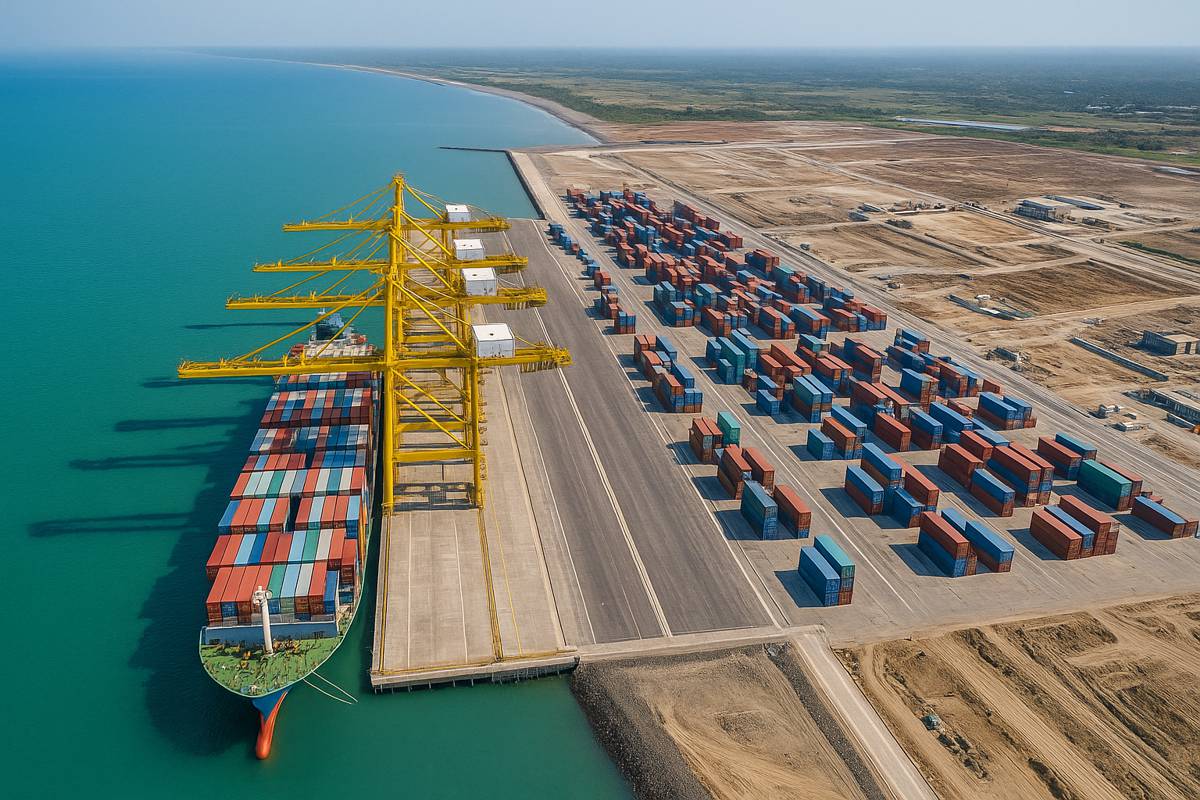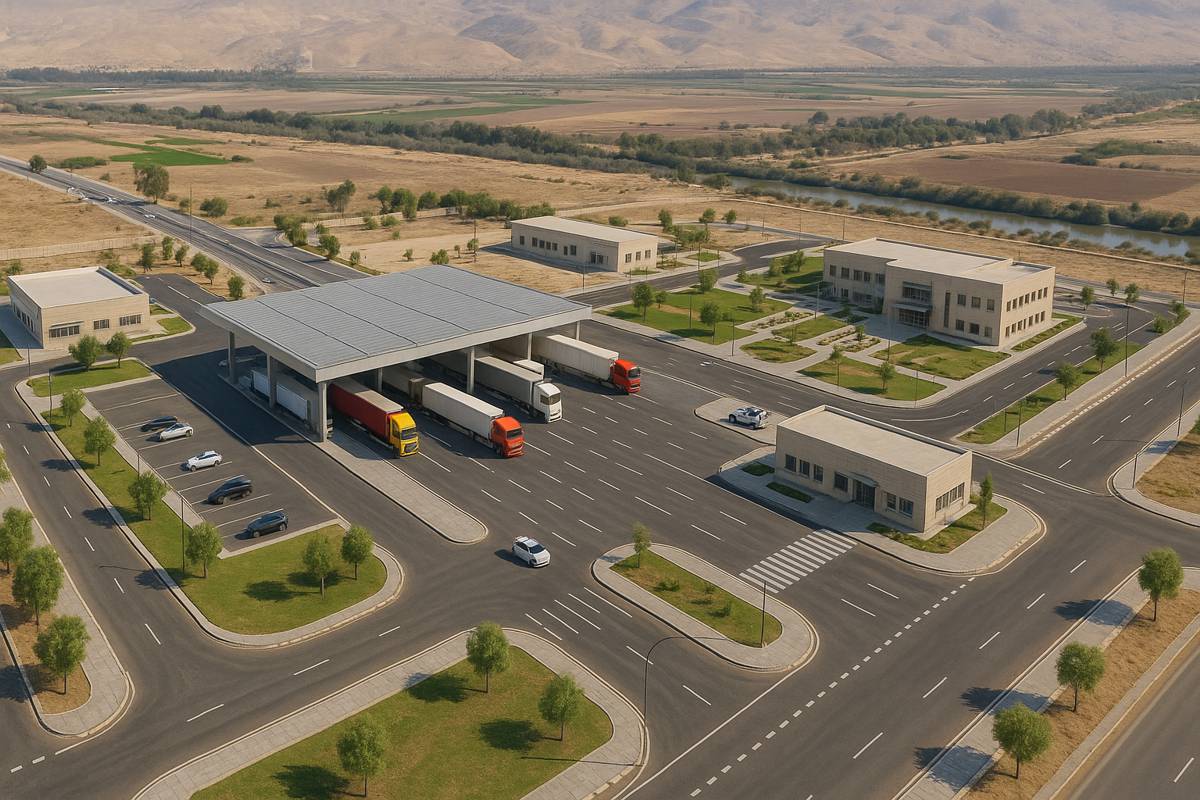Balfour Beatty and Qflow Set New Standards in Sustainable Construction
Balfour Beatty, the UK’s largest construction and infrastructure group, has set a new environmental benchmark with the Thames Estuary Asset Management 2100 (TEAM2100) framework, one of Britain’s most critical flood defence programmes.
Designed to protect London and surrounding areas from the growing threat of tidal flooding, this massive undertaking demonstrates how digital transformation can drive measurable sustainability outcomes in infrastructure delivery.
As climate change intensifies the risk of coastal flooding, the Environment Agency has raised the bar for compliance across every aspect of environmental management. Under the TEAM2100 framework, every tonne of waste, every delivery, and every material source had to be verified, tracked, and proven to meet exacting environmental criteria. Meeting these standards required more than just compliance, it demanded innovation.
How Qflow Transformed Data Management
To navigate the challenge, Balfour Beatty turned to Qflow, a digital construction data specialist known for transforming how project teams manage on-site environmental performance. Qflow’s platform automates data collection, streamlines analysis, and delivers real-time visibility into key sustainability metrics, all from a single dashboard.
By integrating Qflow’s platform into the project, Balfour Beatty eliminated countless hours of manual data entry, freeing site teams to focus on sustainability outcomes rather than paperwork. The digital system provided instant insights into waste movements, material sourcing, and carbon emissions, ensuring that all environmental reports were both accurate and up-to-date.
Leo Connolly, Sustainability Manager at Balfour Beatty, summed up the impact: “The biggest support that Qflow offered was time-saving. Automation of the system provided workable, confident data for us to discuss with the client without needing to spend days going through documents.”
Exceeding Environmental Goals
The results were nothing short of exceptional. Balfour Beatty achieved a 99.6% diversion of waste from landfill, far surpassing its already ambitious 96% target. More impressively, the company reached 99.1% responsible sourcing compliance, compared to an industry norm of just 20-30%. This leap in performance showcases how data-driven accountability can redefine sustainability standards in large-scale infrastructure projects.
The digital records generated by Qflow gave Balfour Beatty a live, transparent view of progress, empowering sustainability managers to act quickly on any deviations and to demonstrate measurable compliance to the Environment Agency. The result was not only regulatory success but also a major step toward creating a more transparent and efficient model for responsible construction.
A Project with National Significance
The TEAM2100 framework holds strategic importance for the UK’s long-term climate resilience. With predictions from the Met Office and the Environment Agency warning of increasingly severe tidal flooding events, infrastructure projects like TEAM2100 are vital to safeguarding the capital’s future.
Beyond its immediate impact, the project also sets a precedent for digital environmental governance. The UK government’s National Infrastructure Strategy has repeatedly emphasised the integration of digital systems into major public works, and Balfour Beatty’s use of Qflow demonstrates exactly why. By turning sustainability into a measurable, trackable, and data-driven process, the TEAM2100 project aligns perfectly with the government’s ambitions for resilient, future-proofed infrastructure.
Expanding Digital Innovation Across Balfour Beatty
Building on the success of TEAM2100, Balfour Beatty has now integrated Qflow’s data management platform into several other high-profile projects, including the Wallend Substation development. This adoption reflects a wider industry trend, the shift towards automation and analytics to meet stringent environmental standards and client expectations.
The partnership between Balfour Beatty and Qflow has proven that collaboration between established infrastructure giants and agile technology innovators can yield tangible sustainability results. For the construction sector, this partnership serves as a compelling example of how digitalisation can simultaneously enhance compliance, cut costs, and support net-zero ambitions.
Building Responsibly Through Data
Founded in 2018 by civil engineer Brittany Harris and environmental scientist Jade Cohen, Qflow was born out of frustration with inefficiencies on construction sites and the lack of visibility into environmental impact. Headquartered in London, Qflow enables contractors to collect real-time data on materials, waste, and carbon directly at the source, giving project teams immediate insight into what’s being used, how it’s sourced, and what happens to it afterward.
By bridging the gap between planning and execution, Qflow allows teams to prevent waste, manage compliance, and minimise environmental risk. Its tools empower project managers to make data-led decisions, avoiding costly delays and ensuring projects meet both commercial and environmental objectives.
Qflow’s mission is simple yet transformative: to provide the data that enables the world to build responsibly. As the construction industry faces increasing pressure to reduce emissions and enhance sustainability, the company’s technology is fast becoming a cornerstone of modern construction management.
A Legacy of Infrastructure Excellence
With over 116 years of experience, Balfour Beatty continues to shape skylines and communities across the globe. The company employs more than 27,000 people worldwide and plays a pivotal role in developing, financing, and maintaining critical infrastructure, from energy and transport to culture and public services.
Current flagship projects include Hinkley Point C, the UK’s first new nuclear power station in a generation; Hong Kong’s world-class Lyric Theatre Complex; and the Automated People Mover system at Los Angeles International Airport. Each of these projects underscores Balfour Beatty’s commitment to engineering excellence, innovation, and sustainability.
Through its work on TEAM2100, Balfour Beatty has not only met environmental targets but demonstrated leadership in the global transition to digital sustainability management. The project illustrates the company’s vision of combining technological innovation with engineering expertise to deliver smarter, cleaner, and more resilient infrastructure.
Building the Future Responsibly
As the construction industry accelerates toward net-zero targets, digital tools like Qflow are reshaping how sustainability is delivered on the ground. The success of Balfour Beatty’s collaboration on TEAM2100 shows that when data and engineering come together, even the most complex environmental challenges can be tackled head-on.
This partnership marks a new chapter in construction, one where accountability is automated, decisions are informed by live data, and every project leaves a lighter footprint. In an age where climate resilience defines infrastructure success, Balfour Beatty and Qflow have set a gold standard for responsible building.




















